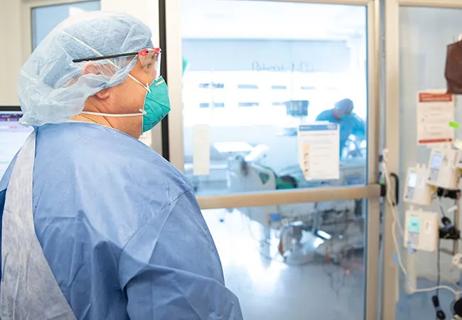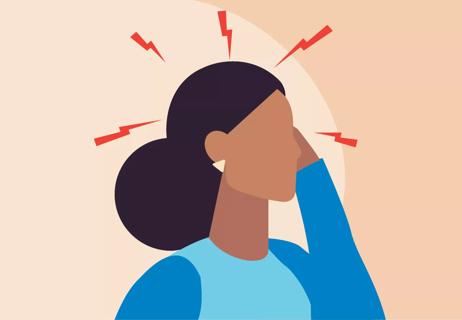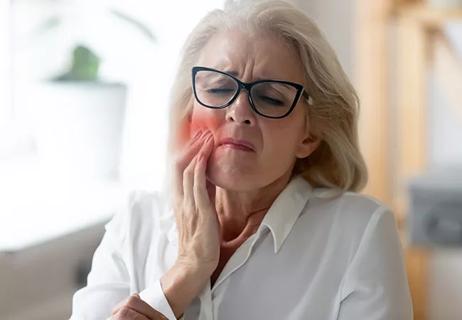A conversation on the state of physiatry with the AAPM&R’s Vice President
When Cleveland Clinic physiatrist Deborah Venesy, MD, recently assumed the office of Vice President of the American Academy of Physical Medicine and Rehabilitation (AAPM&R), the appointment came with an unparalleled opportunity to help shape her specialty over the next several years. As the primary medical society for physical medicine and rehabilitation (PM&R), the AAPM&R has unique impact on the discipline of physiatry, and as its Vice President — a role that leads to successive Board of Governors roles as President-Elect, President and Past-President — Dr. Venesy is positioned to guide the society’s direction for years to come.
Cleveland Clinic is a non-profit academic medical center. Advertising on our site helps support our mission. We do not endorse non-Cleveland Clinic products or services. Policy
In view of Dr. Venesy’s unique position at this moment, Consult QD sought out her perspectives on both the specialty and the society at this time of unprecedented upheaval in the U.S. healthcare landscape. An edited transcript of the interview follows.
Q: What are some key challenges facing physiatry as a discipline?
Dr. Venesy: One main challenge continues to be that we are not a well-known specialty, despite the fact that the AAPM&R was founded in 1938. Among the general public, and even among some healthcare professionals, there remains a lack of familiarity with the fundamentals of PM&R as a specialty for medical doctors and the fact that physiatrists may be subspecialized in areas such as brain injury, hospice/palliative medicine, spinal cord injury, sports medicine, interventional spine, pain medicine and pediatric rehab. There’s inadequate recognition that PM&R focuses treatment on patients’ function and that physiatrists treat the whole person, not just one or more “problem areas.” And there’s insufficient recognition that physiatrists do this by leading a team of medical professionals that includes therapists and others.
This lack of understanding of our specialty is an important contributor to other challenges for PM&R, such as those involving reimbursement, scope of practice, maintenance of certification and even physician burnout.
Q: How is the AAPM&R addressing these challenges?
Dr. Venesy: We do so primarily through advocacy, which takes many forms. AAPM&R strives to advance our specialty and its contributions to health, function and quality of life for our patients. Physician volunteers and AAPM&R staff advocate for all physiatrists — inpatient and outpatient, as well as those in private practice and in group or academic practice — and for our patients before Congress and federal and state agencies. We’re focused on moving the specialty forward through education, advocacy, and promoting diversity, inclusion and equity. Another way of advancing the specialty is through quality measures and data collection, which the AAPM&R is promoting by building a PM&R registry for measures around quality of care and patient function and quality of life.
Q: What opportunities do you see for the discipline at this time?
Dr. Venesy: There are many opportunities for our field to continue to thrive, and they are centered around the AAPM&R’s threefold vision for the specialty, which is as follows: (1) Physiatrists are the essential medical experts in value-based evaluation, diagnosis and management of neuromusculoskeletal and disabling conditions. (2) Physiatrists are indispensable leaders in directing rehabilitation and recovery, and in preventing injury and disease. (3) Physiatrists are vital in optimizing outcomes and function early and throughout the continuum of patient care.”
This vision statement was developed with direct collaborative AAPM&R member feedback. In fact, over 1,000 members provided input into this vision statement and an effort to define future models of care through the Academy’s Visioning PM&R BOLD initiative. Based on this input, the Academy is working to envision the future for physiatrists in five practice areas, or models of care: musculoskeletal care, rehabilitation care continuum, cancer rehabilitation medicine, pediatric rehabilitation medicine and pain/spine medicine.
Q: What about challenges and opportunities specific to the COVID-19 pandemic?
Dr. Venesy: We have embraced telehealth for virtual care as everyone has during the pandemic. We are exploring whether it’s just a tool for physiatrists to use or if there is something unique about telehealth in PM&R.
There are some clear upsides to telehealth in PM&R. We are able to see our disabled patients, young and old, in their homes, allowing us to observe whether a patient can maneuver a wheelchair in his or her home, how deep the rug is, and other practical considerations that were harder to assess before. We can use telehealth for family conferences when needed, and by allowing us to meet patients’ families and pets, telehealth can help forge stronger connections with patients. Telehealth technology also allows us to reach more patients, particularly in rural areas and in settings such as schools. This expanded reach is particularly helpful for meeting underserved subspecialty needs, such as for pediatric rehabilitation.
At the same time, telehealth options can sometimes be limited due to social and healthcare inequities, especially in our patient population, which includes many disabled individuals. The Academy is concerned about these disparities both in the context of telehealth and more broadly. Respect for human dignity and an embrace of diversity and inclusion are core values of the Academy affirmed in our recent Visioning PM&R BOLD initiative.
Of course, COVID-19 has created challenges and required the specialty and the Academy to be nimble beyond the adoption of virtual care. We continue to learn more about the neurologic manifestations of COVID-19 and the general deconditioning after prolonged hospitalization for the condition. There have been clear impacts for our inpatient rehabilitation centers, as patients with COVID-19 tend to be medically complex. Also, the need for physical distancing has somewhat reduced the social environment we strive for in inpatient rehab, where patients tend to learn from each other, especially in a setting like a spinal cord injury unit. And pandemic-related policy changes mean that families cannot participate in the inpatient rehab process as much as they normally do. Additionally, the pandemic has certainly affected physiatrists in private practice, some of whom have had to lay off staff during the lockdown.
Q: How is AAPM&R responding to physiatrists’ needs related to the pandemic?
The AAPM&R Board of Governors has convened many more calls in addition to our usual bimonthly executive meetings. These have focused on advocacy, around issues like the CMS proposed ruling and federal laws such as the Paycheck Protection Program for small businesses, as well as providing monthly virtual town halls for our members and a wealth of COVID-19 webinars [available in archived versions at this link] to share best practices and lessons learned from other members. The webinars have been focused and wide-ranging, covering everything from financial relief for physiatrists to treating patients in skilled nursing facilities to how to think about reopening your private PM&R practice and much more. They are a real asset to the specialty at large.

Q&A with Brain Trauma Foundation guideline architect Gregory Hawryluk, MD, PhD

Q&A with newly arrived autoimmune neurology specialist Amy Kunchok, MD

A neurocritical care specialist shares what’s spurring growth of this new evaluation approach

Focused ultrasound offers a newer alternative to deep brain stimulation

Prehabilitation can help improve outcomes after spine surgery

Get ready for central vein sign and optical coherence tomography

How these new drugs fit into practice two years out from their first approvals

Pharmacologic, procedural and surgical treatments abound